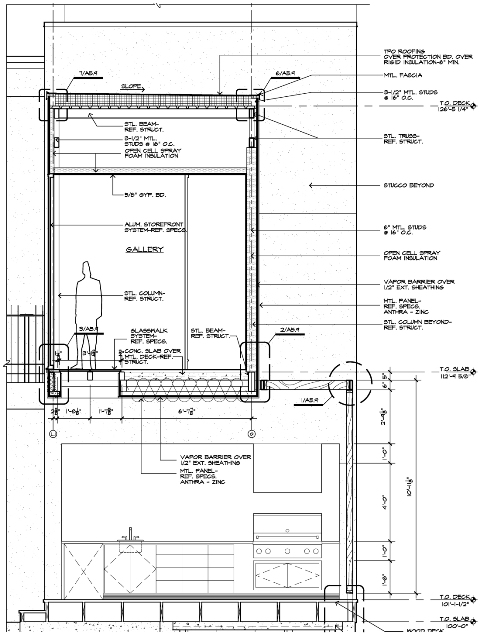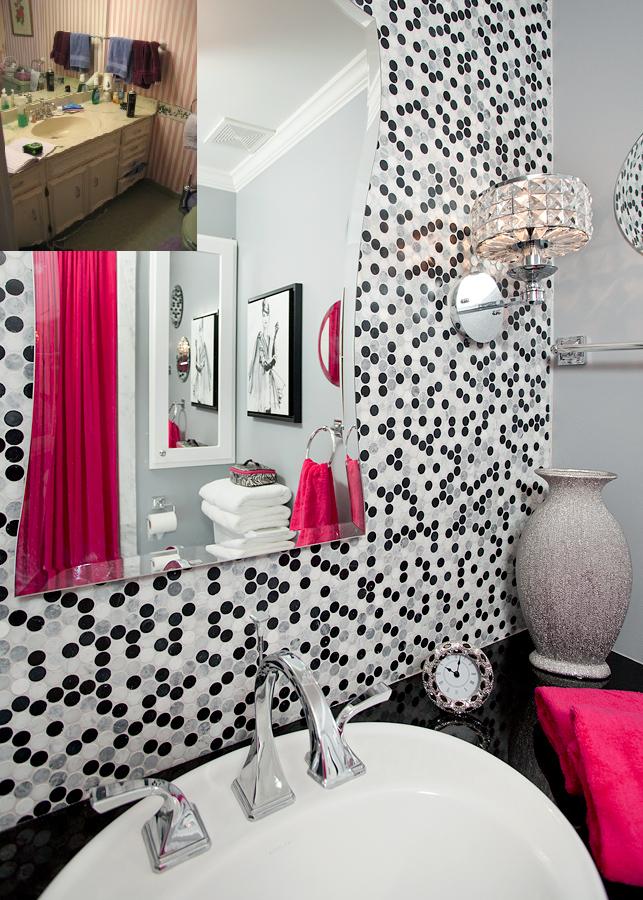 For many people, when one starts looking at completing a “small” remodel or addition, the question arises, whom should I bring in? Do I really need a designer, an architect, a general contractor, or… Does anyone want to guess what many of those parties will say if you ask them if you should use their services, and if they need the other ones? While there are many considerations, including what your definition of small is, I want to just focus on one item that may help start narrowing the field and happens to be the topic of this week’s “Let’s Blog Off.”
For many people, when one starts looking at completing a “small” remodel or addition, the question arises, whom should I bring in? Do I really need a designer, an architect, a general contractor, or… Does anyone want to guess what many of those parties will say if you ask them if you should use their services, and if they need the other ones? While there are many considerations, including what your definition of small is, I want to just focus on one item that may help start narrowing the field and happens to be the topic of this week’s “Let’s Blog Off.”
This week’s Let’s Blog Off is about “How do you define creativity? Is creativity the balance between imagination and talent that bring ideas to life? Is creativity a true differentiator though? Do you believe that “uncreatives” exist, or do you believe all of us have a spark of it on some level?” As is our custom, we will include a list of all those participating at the end of this article (many of whom are not only creative wordsmiths but architects and designers that excel in their own fields), and I highly encourage you to check them out.

While each field has its own savants, good apples, rotten fruit, etc… most of this article is based on the generalities of each field and the good apples aka professionals. In most cases for one to succeed in any of these businesses, you have to be creative, have some talent, and use your imagination. Now based on the needs of your project and the type of creativity you require for it can be used as a great starting point for finding the right people. Why, well that is because each field has its own special “creativity” requirement.
Creativity:
So what is creativity? At its essence, creativity is the ability for an individual or a group to create something new that has some kind of value.
General Contractors:
General contractors are pretty well known for taking a drawing and turning it into reality, managing multiple trades and finding solutions when the unexpected shows up. For those that work in older houses, the challenge to make something look right, when nothing is plumb, true, level, or straight is where many of us get to shine. In many cases, a General Contractor can draw up project documents for most basic remodels and additions, but a good one will recognize or know when you need to contact an architect or designer.
Architects:
While many think architects only work on new properties or full remodels only, that couldn’t be farther from the truth. In many cases an architect should be consulted or utilized when one wants to change the look of the exterior, traffic patterns inside a house, or adding a large addition. Architects are known for creating what many call Blueprints where every detail of the structure & it’s components is shown. To illustrate what should be considered & the details an architect should get into, we would love to point you to this article by Bob Borson of Texas & just one his detail sections utilized in this article. (Thanks Bob for allowing us to use the picture)
Ahhh, the fun part – should you let an architect GC or “run” your project. In many cases, I would urge some caution. While an individual maybe a great architect & draw the best blueprints around, it doesn’t mean that they can successfully manage a project. With that said, I have worked on some great projects where the architect was running it, and many where we were collaborating on the project.
Designers:
Wow, talk about a range of titles with six of the most common ones being; Interior, Lighting, Landscape, Kitchen, Bath, and even Commercial Spaces Designer. While this is one of the most maligned groups out there, it really is too bad in most cases as they have a great way of tying colors, textures, and many other items together to make a space fit not only the house but also the family living or entertaining there. I think one of my favorite posts & pictures that exemplify this was done by Cheryl Kees Clendenon of Florida, as I really can’t see many architects or GC’s that would ever have come up with this solution. (Thanks Cheryl for allowing us to use this picture)
While many people will quickly assume a designer should never run a project, I would have to fall back on a familiar line of “never say never” with the same stipulations as above. While I have not worked on any projects where the designer is the lead, I could see some of them successfully being able to pull it off.
In closing, I would like to reiterate, this is just one factor to start considering when you are looking for someone to get your project from just a thought, to reality. In many cases, you could benefit from at least two, if not all three groups working together from the start, while in others, one party maybe more than adequate for your needs.



Hi Sean – thanks for including me in your post today – it was a good one. The process you describe can be complex but when the right mix of creative people who possess complimentary skill sets, the experience can be highly rewarding.
Cheers
The whole question of who runs the show is an interesting one. From the interaction I have had with her over the last year I have to believe that Cheryl is often in charge on her projects. And should be. The thing is, though, that she’s paid her dues. She knows her own body of work, but also what others need to bring to the table to get the job done correctly. The biggest factor is simply knowing what one knows and what one does not know. I have a general contractor friend who has helped me with a number of home improvement projects, several of which are complex. And those yet to come are more complex still. The ideas are mine, but he is an important factor in bringing them to life. I also want him here when I do things like ripping out a wall. If all goes well, I probably could get along without him, but if there’s a surprise… well, that’s why some of those guys get the big bucks!
Thanks for the nice words Joseph (and Sean!). I think there are two sides to the equation on who runs the show. The projects we run are smaller…for the most part…and we typically have a contractor on anything that is more complicated. Sometimes we want to use our own plumber etc…but if we are “ok” with his subs then no problem….always use our own cabinetmaker and top fabricator because so important to final design execution. And, the cabinetman basically builds “cheryl” cabinets. But I do know many designers who do not have the experience to run a project and it shows. It really depends on the individual situation I think and can work equally well both ways. Our contractor we use most often loves us…we will argue and disagree but have great respect for each other. And he is smaller and can easily work with our time frames. And, he loves the fact that we bring him business! Of course!!
Very nice post and love the topic you discussed Sean. Thank you for using our pix. Anytime:) That particular job we managed ourselves…( I do have an awesome project manager who is also a designer) and went nicely. NEVER quick enough for the client though..and that is pit fall with design driven projects…lets face it..they do move a bit slower….and for necessary reasons. But, try and tell that to a client!
LOL, but they do all these makeovers in a few days on TV…
A big thanks to both Bob & you for allowing me to use pics of your jobs you are or have succesfully managed. Great jobs to both of you
The whole question of who runs the show is an interesting one. From the interaction I have had with her over the last year I have to believe that Cheryl is often in charge on her projects. And should be. The thing is, though, that she’s paid her dues. She knows her own body of work, but also what others need to bring to the table to get the job done correctly. The biggest factor is simply knowing what one knows and what one does not know. I have a general contractor friend who has helped me with a number of home improvement projects, several of which are complex. And those yet to come are more complex still. The ideas are mine, but he is an important factor in bringing them to life. I also want him here when I do things like ripping out a wall. If all goes well, I probably could get along without him, but if there’s a surprise… well, that’s why some of those guys get the big bucks!
Thanks for the nice words Joseph (and Sean!). I think there are two sides to the equation on who runs the show. The projects we run are smaller…for the most part…and we typically have a contractor on anything that is more complicated. Sometimes we want to use our own plumber etc…but if we are “ok” with his subs then no problem….always use our own cabinetmaker and top fabricator because so important to final design execution. And, the cabinetman basically builds “cheryl” cabinets. But I do know many designers who do not have the experience to run a project and it shows. It really depends on the individual situation I think and can work equally well both ways. Our contractor we use most often loves us…we will argue and disagree but have great respect for each other. And he is smaller and can easily work with our time frames. And, he loves the fact that we bring him business! Of course!!
Very nice post and love the topic you discussed Sean. Thank you for using our pix. Anytime:) That particular job we managed ourselves…( I do have an awesome project manager who is also a designer) and went nicely. NEVER quick enough for the client though..and that is pit fall with design driven projects…lets face it..they do move a bit slower….and for necessary reasons. But, try and tell that to a client!
LOL, but they do all these makeovers in a few days on TV…
A big thanks to both Bob & you for allowing me to use pics of your jobs you are or have succesfully managed. Great jobs to both of you
LOL, but they do all these makeovers in a few days on TV…
A big thanks to both Bob & you for allowing me to use pics of your jobs you are or have succesfully managed. Great jobs to both of you
Hi Sean – thanks for including me in your post today – it was a good one. The process you describe can be complex but when the right mix of creative people who possess complimentary skill sets, the experience can be highly rewarding.
Cheers